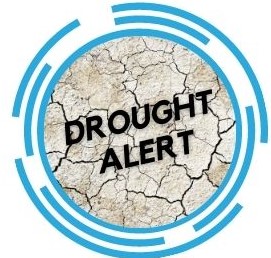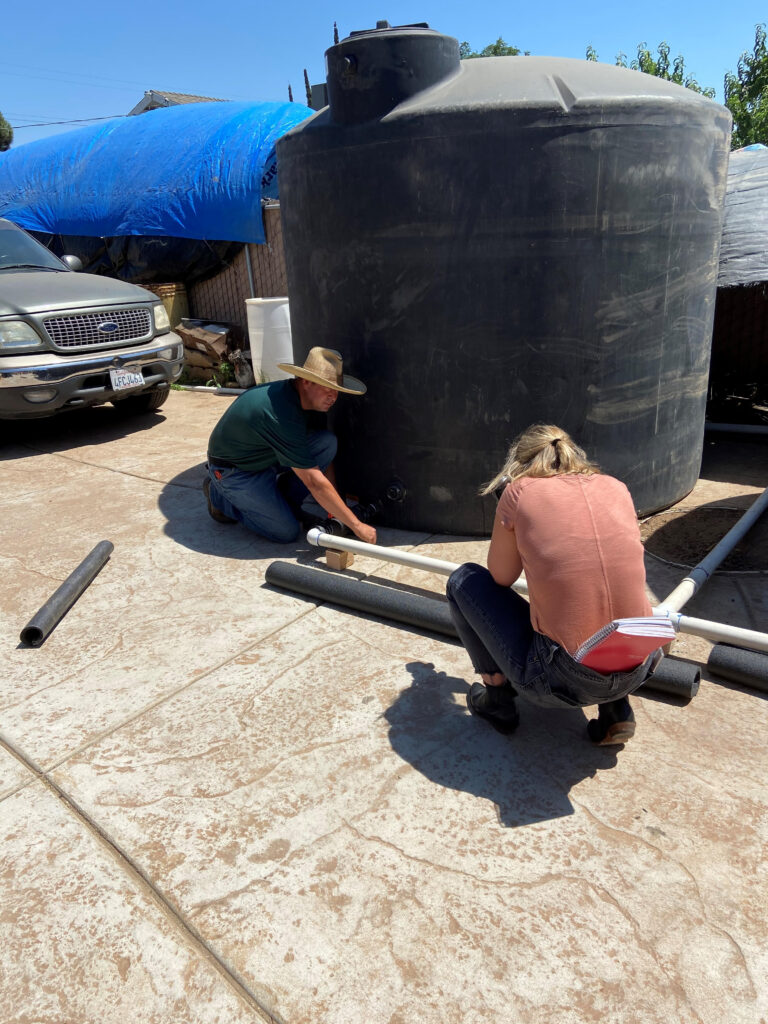Dry wells are starting to crop up throughout California’s San Joaquin Valley as the 2021 drought digs in. And as the parched state barrels toward summer, the risk of more wells going dry is increasing. 
For some, that possibility is already a scary reality.
Misty Vasquez was at work in December, when her husband called to tell her there was no water pressure at the house. The family had relied on the same private well at its rural Tulare County home for more than 60 years with no issues.
Vasquez checked for broken lines or leaks and finally turned on the faucet at the side of the well’s tank. What should have been a rush of water came out as a mere trickle.
“I just started crying because I knew what that meant,” said Vasquez.
The Vasquez family’s story was repeated by the hundreds in the last drought from 2012-2016 when Tulare County first assembled its Drought Task Force. Fearing a replay of dry wells in this drought, the county has relaunched its task force.
Drought response
During its first iteration in 2014, the task force kickstarted a number of programs including household water tank installation, bottled water delivery and assistance with private well drilling and maintenance. Those programs have lived on through other organizations such as the nonprofit Self-Help Enterprises.
This year, the county started seeing a rapid increase in water needs by early spring. In March, there were about 30 household tanks in Tulare County. By April, that number had spiked to 50. The increase triggered concern and the county declared a drought on April 27. Shortly after, the task force was reborn.
“We’re getting the old team back together. We’re in a little bit of a holding pattern because we’re not really sure how big of an impact there will be this time around,” said Denise England, water resources program director for Tulare County.
Most of the state is classified as experiencing extreme drought, the second worst category. Parts of eastern Fresno, Tulare and Kern counties are classified under exceptional drought, the worst category.
In March, the state announced it would only allocate 5% of contracted water allotments through the State Water Project that serves ag lands mostly on the west side of the valley as well as metropolitan areas in southern California. The Bureau of Reclamation dropped its 5% allocation for ag contractors in the northern part of the valley, such as the Westlands Water District, to 0 on May 26. There was no change to the 20% allocation for contractors that receive water from the Bureau’s Friant Division between Fresno and Arvin.
Many farmers have had to turn to groundwater from already over-pumped aquifers. As the water table drops, that can leave residents with shallow wells tapped out.
Wells going dry
Tulare, Fresno, Stanislaus and Madera counties collectively reported 11 dry wells last month, according to the Department of Water Resources. That number is probably higher since the tracking system relies on voluntary reporting.
In Tulare County, England said if the situation worsens the task force and other emergency efforts will need more funding.
On May 10, Gov. Newsom announced a $5.1 billion water package as part of his budget proposal. And while the proposal includes money for emergency drought services, England doesn’t think the budget would help with immediate drought response. Money for more water tanks, water delivery and community outreach would likely have to come from California’s disaster assistance funding, said England.
For well drilling companies, business is booming.
“It’s getting crazy right now and our list is getting longer and longer,” said Jack Rodrick, operations manager for Bradley & Sons Well Drilling.
As wells go dry, people are shelling out big bucks to dig deeper for water.
Bradley & Sons covers residential wells in the Fresno, Madera and Hanford areas. Rodrick said so many private wells are going dry, the company is completely booked four months out.
But not everyone can afford to drill deeper.
Temp water
That’s why Self-Help Enterprises is installing water tanks for families whose wells go dry. The organization has a total of 321 active water tanks. More than half of those are in Madera and Tulare counties.
Madera County in particular, is significantly dry, said Marliez Diaz, water sustainability manager for Self-Help Enterprises.
Diaz said there are a lot of pending applications for water tanks, particularly near Madera Ranchos, just north of Fresno.
Fear of the last drought still lingers.
“Every time now I get a call from Porterville, I kind of panic,” said Diaz.
During the last drought, hundreds of wells went dry in east Porterville, an unincorporated county area adjacent to the City of Porterville. Initially, relief came from other concerned residents until the crisis became national news. Then aid workers descended and, ultimately, most of the community was connected to the City of Porterville’s water system.
But some residents refused to connect to the city system.
“There’s a few water systems in east Porterville and other surrounding areas that are at risk of failing,” said Monte Reyes, mayor of Porterville.
If wells go dry again, Reyes hopes organizations such as Self-Help Enterprises will be able to facilitate more connections to the city system. During the last drought, the state partnered with county agencies and organizations to help pay for connections to the city system. The project cost $48 million and 755 homes were connected to the city water system. But this time, people will have to pay if they decide to connect, which could cost anywhere from $800-$2,000 per household.
Meanwhile, families such as the Vasquezes are making do.
Vasquez had her family’s well tested and sure enough, it was completely dry. After three weeks of using bottled water for sponge baths and toilets, the family qualified for a water tank through Self-Help Enterprises, had one installed in January and is able to function normally again.
Vasquez doesn’t know why her well went dry but she doesn’t blame farmers. She thinks the state has failed at managing its resources and that people are paying the price.
“It’s scary,” said Vasquez. “You don’t realize how much you take it for granted until you don’t have it.”

Share this:
- Click to share on Facebook (Opens in new window)
- Click to share on Twitter (Opens in new window)
- Click to share on LinkedIn (Opens in new window)
- Click to share on Reddit (Opens in new window)
- Click to share on Tumblr (Opens in new window)
- Click to share on Pinterest (Opens in new window)
- Click to share on Pocket (Opens in new window)
- Click to share on Telegram (Opens in new window)
- Click to share on WhatsApp (Opens in new window)
- Click to print (Opens in new window)









You must be logged in to post a comment.